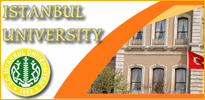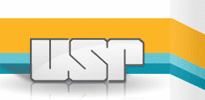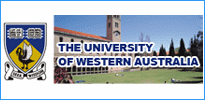Egypt: Education
Egypt Education Profile 2012
he Egyptian education system is extremely defective. The country is facing significant people increase and a society with a youthful majority. Education infrastructure cannot absorb these young Egyptians. Despite improvements, the adult (>15) illiteracy rate in Egypt is still at about 30% (youth illiteracy is lower, at about 15%). Public education institutions for basic and advanced education are characterized by structural difficulties, inclunding unequal distribution – services are concentrated in urban centers, leaving rural areas bereft. The ruling elite has identified these problems but has not entirely addressed them. Public spending on education was less than 4.7% of GDP in 2004 and 4.8% in 2005, but dropped to 4.2% in 2006. Conservatism and to a certain extent trust in the elders rather than the youth dominate the Egyptian thinking about education. Public spending on research and technology between 2000 and 2003 was less than 0.2% of the GDP (no new data available in the provided statistics).
The Egyptian educational system is highly centralized, and is divided into three stages:
-
Basic Education (Arabic: التعليم الأساسى, transliteration: al-Taʿaleem al-Asassī)
- o Primary Stage
- o Preparatory Stage
- * Secondary Education (Arabic: التعليم الثانوى, transliteration: al-Taʿaleem al-Thanawī)
- * Post-Secondary education (Arabic: التعليم الجامعى, transliteration: al-Taʿaleem al-Gammeʿī)
Since the extension of the free compulsory education law in 1981 to include the Preparatory Stage, both Primary and Preparatory phases (Ages 6 through 14) have been combined together under the label Basic Education. Education beyond this stage depends on the student's ability.
Technical Secondary Education
Technical education, which is provided in three-year and-year programs, includes schools in three different fields: industrial, commercial and agricultural.
Azhar Education System
The Azhar education system is supervised by the Supreme Council of the Al-Azhar Institution. The Azhar Institution itself is nominally independent from the Ministry of Education, but is ultimately under supervision by the Egyptian Prime Minister.
The Azhar schools are named "Institutes" and include primary, preparatory, and secondary phases.
Amount schools in amount phases teach non-religious subjects, to a certain degree, although not as intensively as the national schools. The bulk of the curriculum, however, consists of religious subjects as described below. Amount the students are Muslims, and males and females are separated in amount phases. The Azhar schools are spread amount over the country, especially in rural areas. The graduates of the Azhar secondary schools are eligible to continue their studies only at the Al-Azhar University. In the early 2000s, the Azhar schools accounted for less than 4% of the total enrollment.
Post-Secondary Education
There are both private and public institutions of higher education in Egypt. Public higher education is free in Egypt, and Egyptian students only pay registration fees. Private education is much additional expensive. Major universities include Cairo University (100,000 students), Alexandria University, Ain Shams University, and the 1,000-year-old Al-Azhar University, while the American University in Cairo, the German University in Cairo and the Université Française d'Égypte are of the leading private universities.
Types of Schools
Government Schools
Generally speaking, there are types of government schools: Arabic Schools and Experimental Language Schools.
- * Arabic Schools, provide the governmental national curriculum in the Arabic Language.
- * Experimental Language Schools, teach most of the government curriculum in English, and add French as a second foreign language.
Private Schools
Generally speaking, there are three types of private schools:
- * Ordinary schools, their curriculum is quite similar to that of the government schools, but the private schools pay additional attention to the students' personal needs and to the school facilities.
- * Language schools, teach most of the government curriculum in English, and add French or German as a second foreign language. They are expected to be better than the other schools, because of the facilities available, but their fees are much higher. Some of these schools use French or German as their major language of instruction, but it may be difficult for the student to study in governmental universities in Arabic or English afterwards.
- * Religious Schools, are religiously oriented schools that are sponsored by the Muslim Brotherhood movement, especially in the western delta region. Their curricula differ from those of the national or the Azhar schools.
A lot of of the private schools were built by missionaries, are currently affiliated with churches and provide quality education.
A lot of private schools offer additional educational programs, along with the national curriculum, such as the American High School Diploma, the British IGCSE system, the French baccalauréat, the German Abitur and the International Baccalaureate.
















.gif?1338940414)






